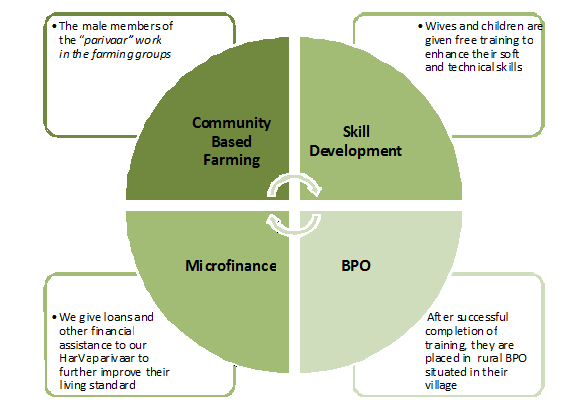Rural Sector
About 72 percent of India's billion-plus people live in rural areas. For years, the poverty of rural India was seen as reining in the country's economic growth. But today analysts say, rural India is a critical audience for marketers because it has been relatively insulated from the crippling blow of the global slowdown.
India's rural destiny still depends on good monsoon rains and robust agricultural production, but four years of bumper crops and heavy government investment in rural infrastructure have given birth to what some analysts call an emerging economy within India.
Traditionally, rural economy is characterized by village farming, modern agriculture, handicrafts, and a wide range of support services.
Business Risk
The entry barriers in this sector-
Heavy infrastructure cost like electricity and transport that accounts for on an average 30% higher than their urban counterpart.
Higher dependence and difficult to liaison with local administrative and government bodies
Inadequate skills of the local labor workforce
Time required to win confidence and build relationships with villagers and influential people
Scattered geography makes it tough to set up and control distribution network
Social and cultural backwardness
The biggest challenge faced by a rural industry is from their counterparts in Tier 2 and Tier 3 cities. These places can act as substitute destinations for investment and growth. These places are similar with respect to deliverables and slightly higher cost but on the other hand smaller cities have better infrastructure and labor.
Double Bottom Line
Businesses traditionally judge their own performance against one bottom line – the financial one. However in the rural sector we consider social service as well - “Double Bottom Line”. The “Double Bottom Line” is a relatively new concept that allows companies to evaluate their performance based on the adoption of sustainability and value creation. This gives us an edge to bargain more with the suppliers as well as buyers. Vendors usually give discounts on supplies in order to associate with a social enterprise and boost their corporate image. Financial institutions are more than willing to invest capital and support them at competitive rates for a longer tenure.
Spurring innovation and job creation in rural communities is key to ensuring our success in the long term. We understand that a rural enterprises can no longer benefit from traditional strategies instead, we need to generate economic value for rural communities through development based on new jobs, increased incomes, create local wealth, improve the quality of life for rural residents, and bring rural communities to function in both local and global economy.
Strategy
Our innovative concept of HarVa “parivaar” gives us a cutting edge. We endeavor to train entire families and employ them according to their skill. This helps us to build strong relationships and ensure that attrition is minimal. Productivity and efficiency are driven by incentives linked to joint performance by each family. Each member of the family experiences great competitive pressure from each other to perform to the best of their ability.

HarVa "parivaar"
The CapEx required to start a business venture in rural areas is very high. In order to justify and optimize the expenses, we have modeled our enterprise for end-to-end solutions; from skill development to employment generation. Backward and forward integration of our business vertical gives us several opportunities to rationalize the overall expense. Looking forward, we believe rural sector will be the engine for growth because prospects in urban India are shrinking. With technological advances, the outlook of villages has improved significantly, thus allowing companies to produce array of goods and services for and from the villages.